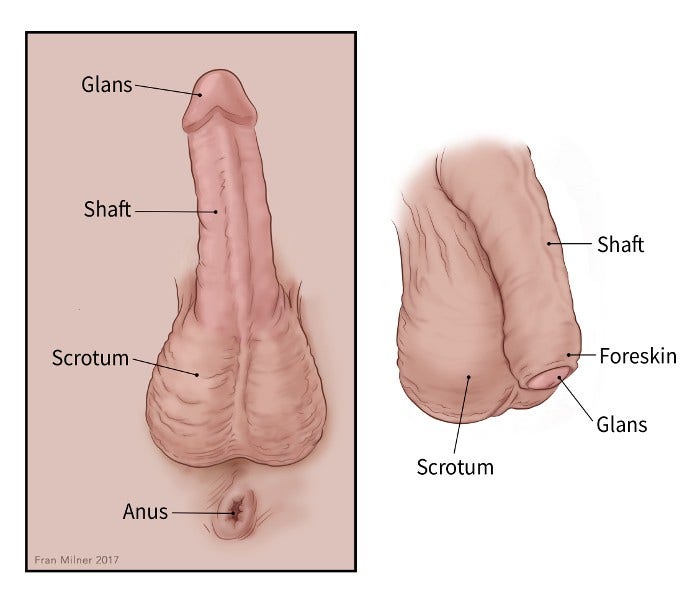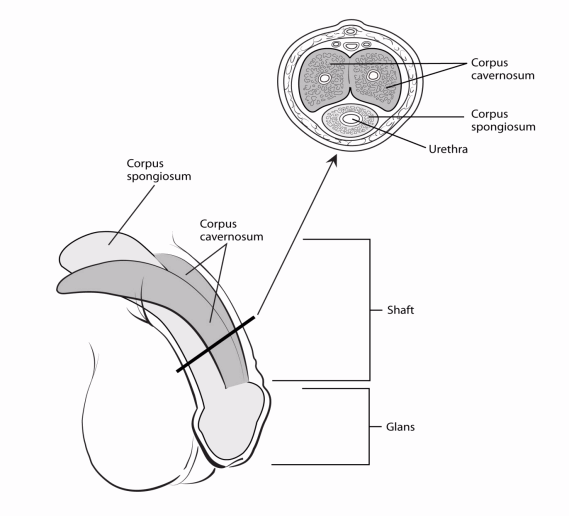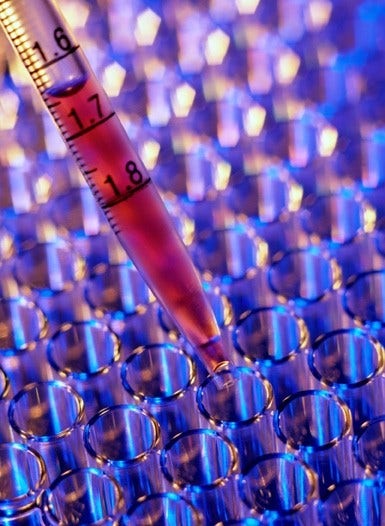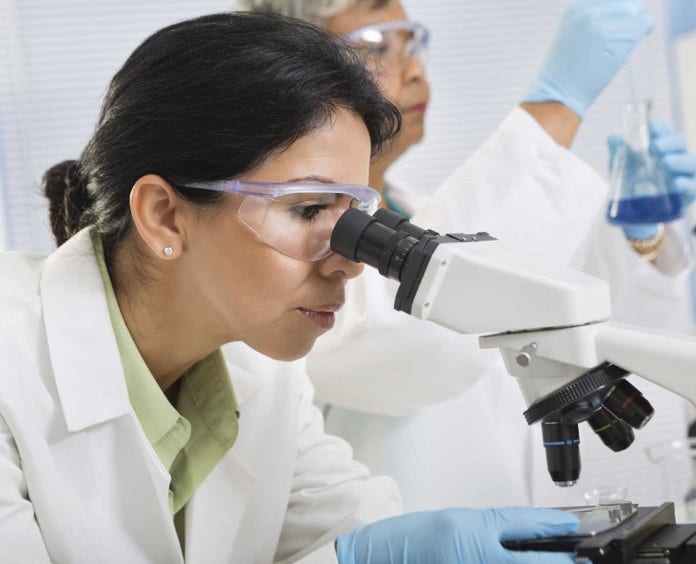Your gift is 100% tax deductible
Penile Cancer
If you have penile cancer or are close to someone who does, knowing what to expect can help you cope. Here you can find out about penile cancer, including risk factors, symptoms, how it’s found, and how it’s treated.
About penile cancer
Penile cancer starts in or on the penis. Cancer starts when cells begin to grow out of control. Cells in nearly any part of the body can become cancer, and they can sometimes spread to other parts of the body.
Understanding the penis
The penis is the external male sex organ. It’s also part of the urinary system. It’s made up of many types of body tissues, including skin, nerves, smooth muscle, and blood vessels.

The main part of the penis is the shaft, and the head of the penis is the glans. At birth, the glans is covered by a piece of skin called the foreskin, or prepuce. The foreskin is sometimes removed in infant boys in an operation called a circumcision.
Inside the penis are 3 chambers that contain a soft, spongy network of blood vessels.
- Two of these cylinder-shaped chambers, the corpora cavernosa, are on either side of the upper part of the penis.
- The third chamber, which runs down the middle of the shaft below them, is the corpus spongiosum. This chamber widens at its end to form the glans.

The corpus spongiosum surrounds the urethra, a thin tube that starts at the bladder and runs through the penis. Urine and semen travel through the urethra and leave the body through an opening in the glans of the penis called the meatus.
To get an erection, nerves signal a man’s body to store blood in the vessels inside the corpora cavernosa. As blood fills the chambers, the spongy tissue expands, and the penis stiffens and gets longer.
During ejaculation, semen (which contains sperm cells and fluids) flows through the urethra and out of the body through the meatus. After ejaculation, the blood in the penis flows back into the body, and the penis becomes soft again.
Benign conditions of the penis
Sometimes, abnormal growths can develop on the penis that are not cancers (they are benign). These lesions might look like warts, bumps, or irritated patches of skin. They’re most often found on the glans or on the foreskin, but they can also occur along the shaft of the penis.
These growths, also known as condyloma acuminata, tend to look like very small cauliflowers. They start small, but they can grow to be as large as an inch or more across if left untreated. Condylomas are caused by infection with certain types of human papillomavirus (HPV).
This condition is also linked to infection with HPV and tends to occur in younger, sexually active men. It appears as small red, brown, or purple spots or patches on the shaft of the penis. When looked at under a microscope, dysplastic (abnormal) cells are seen in the surface layer of the penile skin.
Bowenoid papulosis can sometimes be mistaken for an early-stage penile cancer called carcinoma in situ (CIS), also known as Bowen disease (described below).
Usually, bowenoid papulosis doesn’t cause any problems, and it might even go away on its own after a few months. But if it doesn’t go away and isn’t treated, in rare cases it can progress to squamous cell penile cancer (see below).
Several other benign conditions can also cause abnormal areas to form on the penis, including:
- Genital psoriasis
- Genital lichen planus
- Other sexually transmitted infections, such as herpes or syphilis
Penile cancers (cancers of the penis)
Each type of tissue in the penis contains different types of cells. Different types of penile cancer can start from these cells. Almost all penile cancers start in skin cells of the penis.
The vast majority (about 95%) of penile cancers start in flat skin cells called squamous cells. Squamous cell carcinoma (SCC, also known as squamous cell cancer) can start anywhere on the penis. Most of these cancers start on the foreskin (in men who have not been circumcised) or on the glans. These tumors tend to grow slowly. If they’re found at an early stage, they can usually be cured.
Verrucous carcinoma: This is an uncommon form of squamous cell cancer that can start in the skin in many areas, including the penis. This cancer looks a lot like a large genital wart. Verrucous carcinomas tend to grow slowly but can sometimes get very large. They can grow deep into nearby tissue, but they rarely spread to other parts of the body.
Carcinoma in situ (CIS): This is the earliest stage of squamous cell cancer of the penis. In this stage, the cancer cells are found only in the top layers of skin. They have not yet grown into the deeper tissues. Depending on where the CIS is on the penis, doctors may use other names for it:
- CIS of the glans is sometimes called erythroplasia of Queyrat.
- CIS on the shaft of the penis (or other parts of the genitals) is called Bowen disease.
Basal cell carcinoma (BCC, also known as basal cell cancer) is another type of skin cancer that can develop on the penis. It makes up only a small portion of penile cancers. This type of cancer tends to grow slowly and rarely spreads to other parts of the body.
Melanoma is a type of skin cancer that starts in melanocytes, the cells that make the brownish color in the skin that helps protect it from the sun. These cancers are less common than squamous and basal cell skin cancers, but they are more likely to spread to other parts of the body.
Like squamous and basal cell skin cancers, melanomas are most often found in sun-exposed skin, but rarely they occur in other places like the penis. Only a very small portion of penile cancers are melanomas. For more on melanoma and its treatment, see Melanoma Skin Cancer.
This very rare type of penile cancer develops from sweat glands in the skin of the penis. Sometimes it can be very hard to tell apart from carcinoma in situ (CIS) of the penis (see above).
A small number of penile cancers are sarcomas. These cancers develop from blood vessels, smooth muscle, or other connective tissue cells of the penis. There are many types of sarcomas. For more about this type of cancer, see Soft Tissue Sarcoma and Kaposi Sarcoma.
- Written by
- References

Developed by the American Cancer Society medical and editorial content team with medical review and contribution by the American Society of Clinical Oncology (ASCO).
Heinlen JE, Ramadan MO, Stratton K, Culkin DJ. Chapter 82: Cancer of the Penis. In: Niederhuber JE, Armitage JO, Doroshow JH, Kastan MB, Tepper JE, eds. Abeloff’s Clinical Oncology. 6th ed. Philadelphia, Pa. Elsevier: 2020.
Menon S, Sanchez DF, Chaux A, et al. International Society of Urological Pathology (ISUP) Multidisciplinary Consensus on Premalignant and Putative Precursor Lesions of Penile Cancer: Working Group 5 report on Terminology, Grading, and Molecular Testing Practices. Am J Surg Pathol. 2025 Aug 20.
National Cancer Institute. Penile Cancer Treatment (PDQ®)–Patient Version. 2025. Accessed at https://www.cancer.gov/types/penile/patient/penile-treatment-pdq on June 16, 2025.
Pettaway CA. Carcinoma of the penis: Clinical presentation, diagnosis, and staging. UpToDate. 2025. Accessed at https://www.uptodate.com/contents/carcinoma-of-the-penis-clinical-presentation-diagnosis-and-staging on June 16, 2025.
Pettaway CA. Carcinoma of the penis: Epidemiology, risk factors, and pathology. UpToDate. 2025. Accessed at https://www.uptodate.com/contents/carcinoma-of-the-penis-epidemiology-risk-factors-and-pathology on June 16, 2025.
Thomas A, Necchi A, Muneer A, et al. Penile cancer. Nat Rev Dis Primers. 2021 Feb 11;7(1):11.
Last Revised: September 8, 2025
American Cancer Society medical information is copyrighted material. For reprint requests, please see our Content Usage Policy.
This information is possible thanks to people like you.
We depend on donations to keep our cancer information available for the people who need it most.










